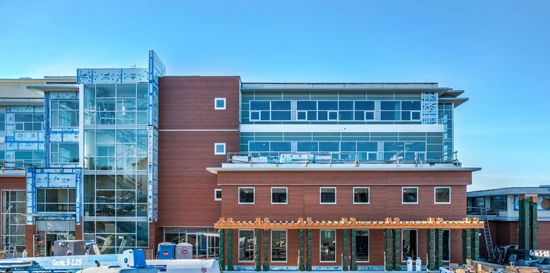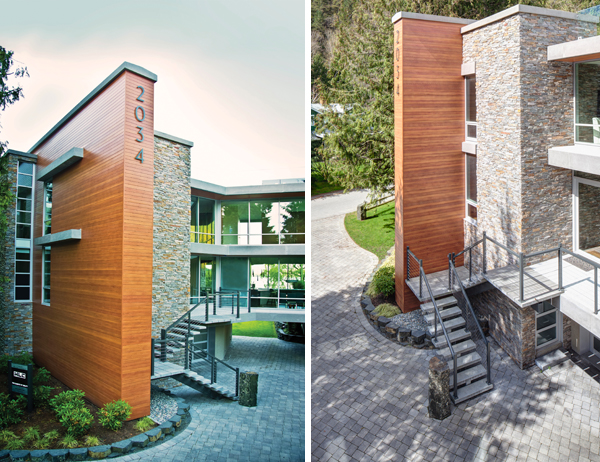Innovations in Aluminum Cladding Systems
Maintenance
Some exterior claddings can require routine and often costly maintenance. With aluminum products, maintenance has been shown to be minimal, drastically reducing and in some cases eliminating obviating the need for staining, repairing, painting, or replacement. Manufacturers recommend a periodic washing with mild soap and water.
LEED Contributions from Aluminum Wall Products
The U.S. Green Building Council's Leadership in Energy and Environmental Design (LEED®) rating system has become the most recognized program for certifying a building for green and sustainable designs. Wood grained aluminum cladding, siding, and soffit used in combination with an aluminum back-framing system and continuous insulation, can collectively contribute to this certification under LEED 2009 in several areas.
Energy and Atmosphere
Optimized Energy Performance EA Credit 1.
The intent is to demonstrate a reduction of energy usage in buildings. The back-framing system with exterior continuous insulation has been shown to improve the thermal performance of exterior walls and contribute to reduced energy needs accordingly. Less energy need ripples over to HVAC equipment sizing which can also be optimized to use as little energy as possible.
Materials and Resources
Construction Waste Management, MR Credit 2.1, 2.2.
The intent in these credits is to divert construction and demolition debris from disposal in landfills and incineration facilities through recycling or salvaging. Using products sized to suit a building project, scrap and waste can be minimized. Any scrap aluminum is 100 percent recyclable and can be collected and sent to an appropriate recycling facility.
Regional Materials MR Credit 5.1, 5.
Credit is given for using at least 10 percent of building materials and products extracted and manufactured within the region for 1 point; using 20 percent of regionally collected materials earns an additional point. Consequently, working with manufacturers that source a good portion of their aluminum locally or regionally can earn credits in this category.
Durable Building MR Credit 8.
LEED seeks to reward projects that minimize materials use and construction waste over a building's life resulting from premature failure of the building and its constituent components and assemblies. Aluminum products have a long service life and can last up to 40 years or more if properly maintained.
Indoor Air Quality
Low-Emitting Materials: Paints and Coatings IEQ Credit 4.
Consistent with the goal of reducing indoor air contaminants, aluminum siding that is powder coated without VOCs can earn credits in this category.
Thermal Comfort: Compliance IEQ Credit 7.
Supporting the productivity and well-being of occupants, an aluminum back-framing system enables external insulation, keeping the interior more comfortable than other conventional solutions.
Innovation in Design
ID Credit 1.
Points are available for sustainable strategies not specifically addressed in other LEED credits. Wood grained aluminum siding in combination with the back frame/continuous insulation system, all providing the durability needed on exterior products, are potential candidates for credits in this category.
Conclusion—Increasing Building Performance Beautifully
Manufacturers of building products and architects concerned with green design are all doing their part to create energy-efficient buildings that have aesthetic appeal. Wood-grained aluminum cladding and thermally broken back framed systems represent a superior response to these goals. The long life of aluminum combined with the rich visual character of wood graining and the added insulation capabilities of thermally broken insulation systems are a valuable addition to the architect's design toolbox. Suitable for a full range of both residential and commercial structures, these aluminum wall systems can decrease energy bills, increase user satisfaction, install easily, and be readily maintained over time. Successful use of these systems in projects of every type are raising the profile of this next generation of code-compliant and AAMA-certified aluminum products that make an important contribution to the sustainable built environment.
 |
Longboard – a division of Mayne Coatings Corp. Mayne Coatings Corp. is best known as the manufacturer of Longboard Products. The company focuses on continually exceeding environmental standards and providing premium architectural products for sustainable design. www.longboardproducts.com |










